Locate the VIN number on the frame of the ATV. This number is usually found near the front end of the vehicle on the left side under the shift lever. The title of the ATV will also have the VIN number on it.
When you find the Yamaha Model Identification Number on an ATV, you can use charts to help decipher it. The VIN is positioned at the bottom of the Yamaha ATV on the frame. You will have to check to locate it, and your ATV may have nerf bars mounted which will make finding the stamp’s code difficult. Also, don’t mistake the engine number, which is located on the engine, for the vehicle identification number.
Where is the VIN number on a Yamaha Raptor? Yamaha Raptor VIN can be found stamped into the left, frame rail, just beneath the shifter.
Where is the VIN number on a Honda ATV? The VIN or frame number position does vary with each ATV make and model so care and effort should be taken when trying to locate it. They are often covered in mud dirt and rust. Suzuki ATV quad bike frame vin numbers are located on the rear frame rail. Honda ATV frame numbers are located in the front, on a flat plate behind the bumper.
What is the VIN number on a Yamaha ATV? Like many legal passenger vehicles, Yamaha ATVs have a 17-digit VIN or Vehicle Identification Number.
Table of Contents
Read the tenth digit. This digit represents the year that the ATV was made. For example, A=1980, B=1981, Y=2000, 1=2001, 9=2009 and A=2010. This letter or number can repeat (the “A,” for example), but the codes of the other digits in the VIN allow you to know in which year the ATV was made.
The first group of three numbers and letters in a VIN make up the world manufacturer identifier (WMI). In this group, the first digit or letter identifies the country of origin. The third digit, when combined with the first two letters or numbers, indicates the vehicle’s type or manufacturing division.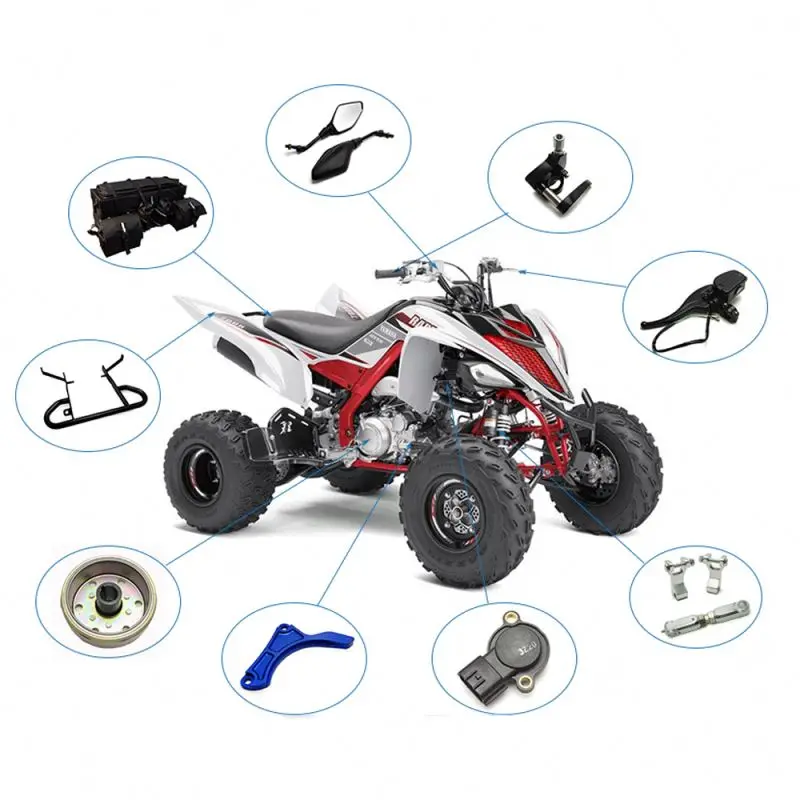
Where can I find my Motorcycle VIN? Motorcycle VINs are usually stamped into the steering neck of the motorcycle. This is located just behind the front forks, behind the headlight (if equipped).
The Vehicle Identification Number (VIN) of your Polaris ATV is a unique number used to identify your vehicle. It is stamped on the frame of your ATV. On vehicles from 1997 and newer, the VIN is 17 digits.
The first group of three numbers and letters in a VIN make up the world manufacturer identifier (WMI). In this group, the first digit or letter identifies the country of origin. The third digit, when combined with the first two letters or numbers, indicates the vehicle’s type or manufacturing division.
– Examine the first digit of the VIN number to find the manufacturer country of origin.
– Find the second digit in the VIN number sequence to determine the manufacturer of the vehicle.
– Read the third character in the VIN number sequence to find out the vehicle type.
Check that the 10th digit matches the year of manufacture. From 2000 onward, it is a number, and before 2000, it is a letter. For example, a 1998 model will have the letter W in the 10th position. Determine the plant where the ATV was made with the 11th digit.
Every car has a unique number called VIN (Vehicle Identification Number) that is used to identify in which month and year that particular model is manufactured. The VIN is an alphanumeric code and you cannot tell the manufacturing month and year simply by looking at it.
– Locate the VIN on your Yamaha.
– Decode the meaning of your Yamaha motor vehicle VIN by breaking down the unique pattern of numbers and letters.
– Locate the third VIN digit.
– Notice VIN numbers four through eight.
– Observe the ninth figure on the VIN.
– Look at the 10th figure of the VIN.
– Locate the VIN on your Yamaha.
– Decode the meaning of your Yamaha motor vehicle VIN by breaking down the unique pattern of numbers and letters.
– Locate the third VIN digit.
– Notice VIN numbers four through eight.
– Observe the ninth figure on the VIN.
– Look at the 10th figure of the VIN.
– Digits 1 through 3 combined is the WMI, (World Manufacturer Identifier).
– Digits 4 through 8 represent the vehicle descriptor section.
– Digit 9 is a check digit.
– Digits 10 through 17 is the Vehicle Identifier Section.
– The 11th digit is the manufacturer’s plant code.
Read the tenth digit. This digit represents the year that the ATV was made. For example, A=1980, B=1981, Y=2000, 1=2001, 9=2009 and A=2010.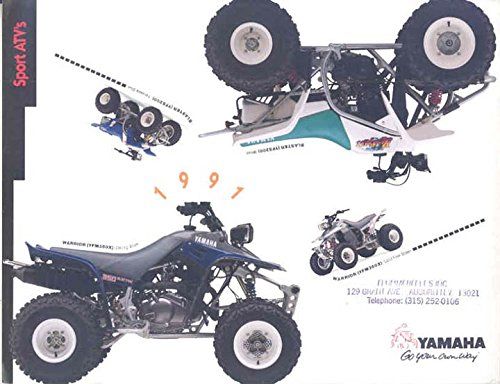 This letter or number can repeat (the “A,” for example), but the codes of the other digits in the VIN allow you to know in which year the ATV was made.
This letter or number can repeat (the “A,” for example), but the codes of the other digits in the VIN allow you to know in which year the ATV was made.
– The first character is the country code.
– The second digit is the manufacturer.
– The third character is a code for what the vehicle is.
– The fourth through eighth characters represent the engine size, engine type, and model.
Order status
Log In
Europe's Number 1
Fast Worldwide Delivery Fast Delivery
3.5 Million Genuine New Parts 3.5 Million Genuine Parts
Europe's Number 1
Every prefix from a Yamaha vehicle identification number (VIN number) refers to a model code.
Here we have a list from all prefixes / VIN number and model codes including their model year and the available colors available in that year.
You can decode your vin number right here, and if you are not sure or your prefix / VIN number is not listed Send us your VIN number and we will check it for you!
It concerns all Yamaha ATV and Quad models from 2000 untill 2012.
Check the Yamaha ATV and Quad list, find your model and you can easily order original Yamaha spares through our online electronic Yamaha spare parts catalog:
The Yamaha ATV \ Quad model prefix / VIN number is alphabetical listed by prefix / VIN number:
| PREFIX CODE / VIN NUMBER | MODEL CODE | YAMAHA SPARE PARTS CATALOG | MODEL YEAR | COLOR 1 | COLOR 2 | COLOR 3 |
| 10P1 | Ah29W | YFM350R | 2007 | DPBSE | PGD | |
| 10P2 | Ah29W | YFM35R | 2007 | SMJ | ||
| 10P3 | Ah29W | YFM35R | 2007 | BWS1 | ||
| 10P4 | Ah29W | YFM35R | 2008 | DPBSE | PGD | |
| 10P5 | Ah29W | YFM35R | 2008 | BWS1 | ||
| 10P7 | Ah29W | YFM350R | 2010 | DPBSE | BWS1 | |
| 10P8 | Ah29W | YFM35R | 2011 | DPBSE | BWS1 | |
| 16B3 | AM28W | YXR7F4P | 2010 | DPBSN | ||
| 17S3 | AJ14W | YFM450FG GRIZZLY 4x4 | 2008 | RTR | PDG | DPBSE |
| 17S7 | AJ16W | YFM45FG | 2008 | YB | ||
| 18P9 | AJ42W | YFZ450R | 2010 | DPBSE | BWS1 | |
| 18PC | AJ42W | YFZ450R SE | 2010 | DBNM7 | ||
| 18PF | AJ42W | YFZ450R | 2011 | DPBSE | ||
| 18PH | AJ42W | YZF450R SE | 2011 | SMJ | ||
| 1AB3 | Ah23W | YFM350F GRIZZLY 4x4 | 2010 | RTR | PDG | |
| 1AB9 | Ah23W | YFM350F GRIZZLY 4X4 | 2011 | RTR | PDG | |
| 1AS3 | AM07W | YFM700R | 2010 | DPBSE | BWS1 | |
| 1AS6 | AM07W | YFM7RSE | 2010 | BWS1 | ||
| 1AS9 | AM07W | YFM700R | 2011 | DPBSE | BWS1 | |
| 1ASC | AM07W | YFM700R SE | 2011 | SMJ | ||
| 1ASJ | AM07W | YFM700R SE | 2012 | SMJ | ||
| 1BS3 | Ah28W | YFM350R | 2010 | DPBSE | BWS1 | |
| 1BS6 | Ah28W | YFM350R | 2011 | DPBSE | BWS1 | |
| 1BS8 | Ah28W | YFM350R | 2012 | DPBSE | ||
| 1BT3 | AG03W | YFM250R | 2010 | DPBSE | BWS1 | |
| 1BTA | AG03W | YFM250R | 2011 | DPBSE | BWS1 | |
| 1BTD | AG03W | YFM25RSE | 2011 | DPBSE | ||
| 1BTH | AG03W | YFM250R | 2012 | DPBSE | ||
| 1C13 | 4SH | YFM400FP BIG BEAR PRO | 2005 | PDG | ||
| 1C54 | AE02W | YFM125 GRIZZLY | 2004 | PDG | DPBSE | |
| 1C5F | AE02W | YFM125 GRIZZLY | 2007 | PDG | DPBSN | |
| 1C5K | AE02W | YFM125 GRIZZLY | 2008 | PDG | DPBSE | |
| 1C5T | AE02W | YFM125 GRIZZLY | 2010 | SMJ | DPBSN | |
| 1C5V | AE02W | YFM125G | 2011 | PDG | DPBSN | |
| 1CT3 | AJ47W | YFM450F GRIZZLY EPS | 2011 | PDG | ||
| 1CT7 | AJ48W | YFM450F GRIZZLY EPS BLACK | 2011 | YB | ||
| 1CTA | AJ50E | YFM45FGPS | 2011 | DPBSN | ||
| 1CTD | AJ47W | YFM450F GRIZZLY EPS 4x4 | 2012 | PDG | ||
| 1CTH | AJ48W | YFM450F GRIZZLY EPS LTD YAMAHA BLACK | 2012 | YB | ||
| 1CTL | AJ50W | YFM45FGP | 2012 | DPBSN | ||
| 1CU3 | AJ14W | YFM45FG | 2011 | PDG | DPBSN | |
| 1CU8 | AJ14W | YFM450F GRIZZLY IRS 4x4 | 2012 | PDG | DPBSN | |
| 1D93 | AJ14W | YFM450FA KODIAK 4X4 | 2005 | RTR | PDG | DPBSE |
| 1D9D | AJ14W | YFM450FA KODIAK 4x4 | 2006 | RTR | PDG | DPBSE |
| 1DT3 | AM09W | YFM700F GRIZZLY EPS | 2011 | PDG | ||
| 1DT7 | AM09W | YFM700F GRIZZLY EPS BLACK | 2011 | YB | ||
| 1DTA | AM09W | YFM7FGPS | 2011 | DPBSN | ||
| 1DTD | AM09W | YFM700 GRIZZLY EPS SE | 2011 | S3 | ||
| 1HP3 | AM09W | YFM700F GRIZZLY EPS 4x4 | 2012 | PDG | ||
| 1HP7 | AM38W | YFM7FGPH | 2012 | YB | ||
| 1HPB | AM39W | YFMFGPSE | 2012 | LYNM | ||
| 1HPE | AM42W | YFM7FGP | 2012 | DPBSN | ||
| 1HS3 | AJ53W | YFM550F GRIZZLY EPS 4x4 | 2012 | PDG | ||
| 1HS7 | AJ54W | YFM550F YAMAHA BLACK | 2012 | YB | ||
| 1HSA | AJ58W | YFM5FGP | 2012 | DPBSN | ||
| 1NS3 | Ah23W | YFM35FG | 2012 | RTR | PDG | DPBSN |
| 1P03 | AG01W | YFM250 BRUIN | 2005 | RTR | PDG | DPBSE |
| 1P0F | AG01W | YFM250B BIG BEAR | 2008 | RTR | PDG | DPBSE |
| 1P0P | AG01W | YFM25B | 2010 | PDG | ||
| 1P0T | AG01W | YFM25B | 2011 | RTR | PDG | |
| 1PD3 | AJ60W | YFZ450 | 2012 | SMJ | ||
| 1PY3 | AE02W | YFM125 GRIZZLY 2x4 | 2012 | DPBSN | ||
| 1RB3 | AM17W | YXR700F | 2012 | RTR | PDG | |
| 1RBA | AM22W | YXR7FSP | 2012 | LYNM | ||
| 1S33 | AM07W | YFM700R | 2006 | DPBSE | BWS1 | |
| 1S36 | AM07W | YFM700R | 2006 | LRYS1 | ||
| 1S39 | AM07W | YFM700R | 2007 | DPBSE | PGD | |
| 1S3C | AM07W | YFM70RSE | 2007 | SMJ | ||
| 1S3G | AM07W | YFM70R | 2007 | BWS1 | ||
| 1S3K | AM07W | YFM700R | 2008 | DPBSE | PGD | |
| 1S3P | AM07W | YFM70RSP | 2008 | BWS1 | ||
| 1S3U | AM07W | YFM70RSP | 2008 | SMJ | ||
| 23D3 | AM03W | YFM66FG | 2008 | PDG | RTR | DPBSE |
| 23D7 | AM03W | YFM66FG | 2008 | YB | ||
| 28P9 | AJ39W | YFM550F GRIZZLY FI 4x4 | 2010 | PDG | SMJ | |
| 28PE | AJ39W | YFM5FG | 2011 | PDG | ||
| 2C65 | AM03W | YFM660FA GRIZZLY | 2005 | SML | ||
| 2C6B | AM03W | YFM660FA GRIZZLY | 2006 | PDG | RTR | DPBSE |
| 2C6G | AM03W | YFM66FA | 2006 | PDG | ||
| 2C6J | AM03W | YFM66FA | 2006 | DNME | ||
| 2C6R | AM03W | YFM660F GRIZZLY | 2007 | PDG | RTR | DPBSE |
| 2C6V | AM03W | YFM66FG | 2007 | PDG | ||
| 2P52 | AJ19W | YXR450FA RHINO | 2006 | PDG | ||
| 33B4 | AG06W | YFM25R | 2010 | DPBSE | BWS1 | |
| 33B5 | AG06W | YFM25R | 2011 | DPBSE | BWS1 | |
| 33B7 | AG06W | YFM250RB | 2012 | DPBSE | ||
| 34DE | AJ41W | YFM5FGP | 2010 | PDG | SMJ | DPBSN |
| 34DJ | AJ41W | YFM5FGPH | 2010 | YB | ||
| 34DM | AJ41W | YFM550F GRIZZLY EPS | 2011 | PDG | ||
| 34DS | AJ41W | YFM550F GRIZZLY EPS BLACK | 2011 | YB | ||
| 34DV | AJ41W | YFM5FGPSE | 2011 | DPBSN | ||
| 37SA | AJ14W | YFM450F GRIZZLY 4x4 | 2010 | PDG | DPBSN | |
| 38D1 | Ah32W | YFM350A | 2008 | RTR | PDG | DPBSE |
| 38D2 | Ah32W | YFM35WG | 2009 | RTR | PDG | SMJ |
| 38D4 | Ah32W | YFM35WG | 2011 | RTR | PDG | |
| 38P1 | Ah31W | YFM350FW | 2008 | RTR | PDG | DPBSE |
| 38P2 | Ah31W | YFM35WFG | 2009 | RTR | PDG | SMJ |
| 38P2 | Ah31W | YFM35WFG | 2009 | RTR | PDG | SMJ |
| 38P3 | Ah31W | YFM35WFG | 2010 | RTR | PDG | |
| 38P4 | Ah31W | YFM35WFG | 2011 | RTR | PDG | |
| 3B43 | AM09W | YFM700F GRIZZLY | 2007 | PDG | RTR | DPBSE |
| 3B47 | AM09W | YFM7FGP | 2007 | PDG | ||
| 3B4C | AM09W | YFM7FGP | 2007 | YB | ||
| 3B4F | AM09W | YFM700F GRIZZLY EPS | 2008 | PDG | RTR | DPBSE |
| 3B4K | AM09W | YFM7FGP | 2008 | YB | ||
| 3B4P | AM09W | YFM7FGP | 2008 | YB | ||
| 3B52 | 3GG | YFZ350 | 2005 | SMJ | ||
| 3B55 | 3GG | YFZ350 BANSHEE | 2006 | BWS1 | ||
| 3B5C | 3GG | YFZ350 BANSHEE | 2007 | RTR | ||
| 3B5F | 3GG | YFZ350 BANSHEE | 2008 | VYRS4 | ||
| 3B5H | 3GG | YFZ350 BANSHEE | 2009 | RTR | ||
| 3B5K | 3GG | YFZ350 | 2010 | BWS1 | ||
| 3B5M | 3GG | YFZ350 BANCHEE | 2011 | BWS1 | ||
| 3C23 | AJ21W | YFM450FX WOLVERINE SPORT 4x4 | 2006 | DPBSE | BWS1 | |
| 3C2C | AJ21W | YFM450FX WOLVERINE 4X4 | 2008 | DPBSE | PGD | |
| 3C2F | AJ23W | YFM45FX | 2008 | SML | ||
| 3C2J | AJ21W | YFM450FX WOLVERINE 4X4 | 2009 | DPBSE | SMJ | |
| 3C2M | AJ21W | YFM450FX WOLVERINE 4x4 | 2010 | BWS1 | ||
| 3D53 | Ah24W | YFM350X WOLVERINE 2x4 | 2006 | DPBSE | BWS1 | |
| 3D57 | Ah24W | YFM350X WOLVERINE 2X4 | 2008 | DPBSE | PGD | |
| 3D59 | Ah24W | YFM350X WOLVERINE 2X4 | 2009 | DPBSE | ||
| 3FAS | 3FA | YFM125 BREEZE | 2000 | RW | ||
| 3FAV | 3FA | YFM125 BREEZE | 2001 | RW | ||
| 3FAY | 3FA | YFM125 BREEZE | 2002 | RW | ||
| 3GDW | 3GD | YFM350 WARRIOR | 2000 | DPBSE | RW | |
| 42S3 | AM25W | YXR70FSP2 | 2009 | YB | ||
| 42SS | AM17W | YXR700F RHINO | 2011 | RTR | PDG | DPBSN |
| 42ST | AM22W | YXR700F RHINO BLACK | 2011 | YB | ||
| 43P3 | AM09W | YFM700FGP GRIZZLY FI EPS 4x4 | 2009 | PDG | SMJ | RTR |
| 43P7 | AM09W | YFM7FGP | 2009 | YB | ||
| 43PC | AM09W | YFM7FGP | 2009 | YB | ||
| 43PF | AM09W | YFM7FGP | 2009 | YB | ||
| 43PJ | AM09W | YFM700F GRIZZLY FI EPS 4x4 | 2010 | PDG | SMJ | DPBSN |
| 43PN | AM09W | YFM7FGPH | 2010 | YB | ||
| 43PU | AM09W | YFM700F GRIZZLY SE | 2010 | YB | ||
| 4D33 | AG03W | YFM250R | 2008 | DPBSE | PGD | |
| 4D37 | AG03W | YFM25R | 2008 | SMJ | ||
| 4D3B | AG03W | YFM25R | 2008 | YB | ||
| 4D3F | AG03W | YFM250R | 2009 | DPBSE | BWS1 | |
| 4D3K | AG03W | YFM25RSE | 2009 | SMJ | ||
| 4D3P | AG03W | YFM25RSE | 2009 | SMJ | ||
| 4EMV | 4EM | YFM80 BADGER | 2000 | RW | ||
| 4KDM | 4KD | YFM250FW TIMBERWOLF 4x4 | 2000 | PDG | ||
| 4KDR | 4KD | YFM250FW TIMBERWOLF 4x4 | 2001 | PDG | ||
| 4S28 | Ah25W | YFM350FGD GRIZZLY IRS 4x4 | 2008 | RTR | PDG | DPBSN |
| 4S2G | Ah25W | YFM350F GRIZZLY IRS 4x4 | 2009 | RTR | PDG | SMJ |
| 4S2K | Ah25W | YFM350F GRIZZLY 4x4 IRS | 2010 | RTR | PDG | |
| 4S2S | Ah25W | YFM350F GRIZZLY IRS 4x4 | 2011 | PDG | DPBSN | |
| 4SHL | 4SH | YFM400FW | 2000 | PDG | ||
| 4SHS | 4SH | YFM400F BIG BEAR PRO | 2002 | PDG | ||
| 4SHV | 4SH | YFM400F BIG BEAR PRO | 2003 | PDG | ||
| 4SHY | 4SH | YFM400FP BIG BEAR PRO | 2004 | PDG | ||
| 4XE8 | AG01W | YFM250 | 2000 | PDG | DPBSE | |
| 4XED | AG01W | YFM250 BEAR TRACKER 2x4 | 2001 | RTR | PDG | DPBSE |
| 4XEG | AG01W | YFM250 BEAR TRACKER 2x4 | 2002 | RTR | PDG | DPBSE |
| 4XEK | AG01W | YFM250 BEAR TRACKER 2x4 | 2003 | RTR | PDG | DPBSE |
| 4XEN | AG01W | YFM250 BEAR TRACKER 2x4 | 2004 | RTR | PDG | DPBSE |
| 5B43 | AM17W | YXR700F RHINO | 2008 | RTR | PDG | DPBSN |
| 5B47 | AM19W | YXR70F | 2008 | YB | ||
| 5B4D | AM22W | YXR70FSP | 2008 | YB | ||
| 5B4G | AM25W | YXR70FSP | 2008 | YB | ||
| 5B4K | AM17W | YXR700F RHINO | 2009 | PDG | DPBSN | |
| 5B4S | AM22W | YXR70FSEP | 2009 | YB | ||
| 5B4V | AM19W | YXR70FH | 2009 | YB | ||
| 5B4Y | AM26W | YXR70FSE | 2009 | RTR | SMJ | |
| 5D33 | AJ20W | YFZ450 | 2007 | DPBSE | PGD | |
| 5D36 | AJ20W | YFZ450SE | 2007 | BWS1 | ||
| 5D3A | AJ20W | YFZ450SE | 2007 | SMJ | ||
| 5D3D | AJ20W | YFZ450 | 2008 | DPBSE | PGD | |
| 5D3G | AJ20W | YFZ450SP | 2008 | SMJ | ||
| 5D3L | AJ20W | YFZ450 SE | 2008 | BWS1 | ||
| 5D3P | AJ20W | YFZ450 | 2009 | DPBSE | BWS1 | |
| 5D3R | AJ20W | YFZ450 | 2009 | BWS1 | ||
| 5FK7 | 3GG | YFZ350 BANSHEE | 2000 | DPBSE | ||
| 5FKC | 3GG | YFZ350 BANCHEE | 2001 | DPBSE | ||
| 5FKG | 3GG | YFZ350 BANSHEE | 2002 | DPBSE | ||
| 5FKL | 3GG | YFZ350 BANSHEE | 2003 | DPBSE | ||
| 5FKS | 3GG | YFZ350 BANSHEE | 2004 | DPBSE | ||
| 5FKX | 3GG | YFZ350 BANSHEE | 2005 | DPBSE | ||
| 5Gh5 | AJ03W | YFM400FA KODIAK 4x4 MANUAL | 2000 | PDG | RTR | |
| 5GHH | AJ03W | YFM400FA KODIAK AUTOMATIC | 2001 | PDG | RTR | |
| 5GHM | AJ03W | YFM400FW KODIAK MANUAL | 2002 | PDG | RTR | DPBSE |
| 5GTB | AJ02W | YFM600F GRIZZLY 4x4 | 2000 | PDG | RTR | |
| 5GTG | AJ02W | YFM600F GRIZZLY | 2001 | PDG | RTR | |
| 5KJ2 | 3JM | YFS200 BLASTER | 2000 | DPBSE | ||
| 5KJ5 | 3JM | YFS200 BLASTER | 2001 | DPBSE | ||
| 5KJ8 | 3JM | YFS200 BLASTER | 2002 | DPBSE | YB | |
| 5KM3 | AM02W | YFM600F GRIZZLY | 2002 | PDG | RTR | |
| 5KMB | AM03W | YFM660F GRIZZLY | 2003 | PDG | RTR | |
| 5KMF | AM03W | YFM660F GRIZZLY LIMITED | 2003 | DNMA | ||
| 5KMK | AM03W | YFM660F GRIZZLY | 2004 | PDG | RTR | |
| 5KMS | AM03W | YFM660F GRIZZLY LIMITED | 2004 | DRMD | ||
| 5KMW | AM03W | YFM660FA | 2005 | PDG | RTR | |
| 5LP4 | AM01W | YFM660R | 2001 | DPBSE | ||
| 5LP7 | AM01W | YFM660R | 2002 | DPBSE | ||
| 5LPB | AM01W | YFM660R | 2003 | DPBSE | YB | |
| 5LPE | AM01W | YFM660R | 2003 | YB | YB | |
| 5LPH | AM01W | YFM660R | 2004 | DPBSE | YB | |
| 5LPL | AM01W | YFM660R | 2004 | YB | ||
| 5LPS | AM01W | YFM660R | 2005 | DPBSE | YB | |
| 5LPV | AM01W | YFM660R | 2005 | DNME | ||
| 5ND3 | AJ06W | YFM450F KODIAK 4X4 | 2003 | RTR | PDG | DPBSE |
| 5NDA | AJ06W | YFM450FA KODIAK 4X4 | 2004 | RTR | PDG | DPBSE |
| 5NE2 | 4EM | YFM80 BADGER | 2001 | DPBSE | ||
| 5NE7 | 4EM | YFM80 BADGER | 2002 | DPBSE | ||
| 5NF2 | 3GD | YFM350 WARRIOR | 2001 | DPBSE | RW | |
| 5NF6 | 3GD | YFM350 WARRIOR | 2002 | YB | DPBSE | |
| 5NFA | 3GD | YFM350 WARRIOR | 2003 | DPBSE | YB | |
| 5NFD | 3GD | YFM350 WARRIOR | 2004 | DPBSE | YB | |
| 5TE3 | AJ07W | YFM400F KODIAK 4X4 | 2003 | RTR | PDG | DPBSE |
| 5TE8 | AJ07W | YFM400FA KODIAK 4X4 | 2004 | RTR | PDG | DPBSE |
| 5TG3 | AJ11W | YFZ450 | 2004 | DPBSE | ||
| 5TG9 | AJ11W | YFZ450 | 2005 | DPBSE | YB | |
| 5TGD | AJ11W | YFZ450 | 2005 | LRYS1 | ||
| 5TGF | AJ20W | YFZ450 | 2006 | DPBSE | BWS1 | |
| 5TGJ | AJ20W | YFZ450 | 2006 | LRYS1 | ||
| 5Th4 | AB02W | YFM80R | 2002 | DPBSE | ||
| 5TH7 | AB02W | YFM80R | 2003 | DPBSE | ||
| 5THA | AB02W | YFM80R | 2004 | DPBSE | ||
| 5THD | AB02W | YFM80R | 2005 | DPBSE | ||
| 5THG | AB02W | YFM80R | 2006 | DPBSE | ||
| 5THK | AB02W | YFM80R | 2007 | DPBSE | ||
| 5THN | AB02W | YFM80R | 2008 | DPBSE | ||
| 5UG5 | AM04W | YXR660FA RHINO | 2005 | PDG | ||
| 5UGD | AM04W | YXR660FA RHINO | 2006 | PDG | ||
| 5UGH | AM06W | YXR66FA | 2006 | PDG | ||
| 5Uh5 | AH09W | YFM350FA BRUIN 4X4 | 2004 | RTR | PDG | DPBSE |
| 5UH8 | Ah23W | YFM350FA BRUIN 4X4 | 2005 | RTR | PDG | DPBSE |
| 5UHD | Ah23W | YFM350FA BRUIN 4x4 | 2006 | RTR | PDG | DPBSE |
| 5UHN | Ah23W | YFM350FG GRIZZLY 4X4 | 2008 | RTR | PDG | DPBSE |
| 5UHW | Ah23W | YFM350F GRIZZLY 4x4 | 2009 | RTR | PDG | SMJ |
| 5Vh4 | AJ08W | YFM400F KODIAK 2X4 | 2003 | RTR | PDG | |
| 5VH6 | AJ08W | YFM400A KODIAK 2X4 | 2004 | RTR | PDG | DPBSE |
| 5VJ3 | 3FA | YFM125 BREEZE | 2003 | DPBSE | ||
| 5VJ6 | 3FA | YFA1 | 2004 | DPBSE | PDG | |
| 5VM2 | AG02W | YFS200 BLASTER | 2003 | DPBSE | YB | |
| 5VM4 | AG02W | YFS200 BLASTER | 2004 | DPBSE | YB | |
| 5VM6 | AG02W | YFS200 BLASTER | 2005 | DPBSE | YB | |
| 5VM8 | AG02W | YFS200 BLASTER | 2006 | DPBSE | BWS1 | |
| 5VMA | AG02W | YFS200 | 2006 | SMJ | ||
| 5VMB | AG02W | YFS200 BLASTER | 2007 | BWS1 | ||
| 5Wh3 | Ah20W | YFM350A | 2004 | RTR | PDG | DPBSE |
| 5WH5 | Ah20W | YFM350BA BRUIN 2X4 | 2005 | RTR | PDG | DPBSE |
| 5WH8 | Ah20W | YFM350BA BRUIN 2x4 | 2006 | RTR | PDG | DPBSE |
| 5WHE | Ah20W | YFM350 GRIZZLY 2X4 | 2008 | RTR | PDG | DPBSE |
| 5WHJ | Ah20W | YFM350 GRIZZLY 2x4 | 2009 | RTR | PDG | SMJ |
| 5WHR | Ah20W | YFM350 GRIZZLY 2X4 | 2011 | RTR | PDG | |
| 5YF3 | AA01W | YFM50R | 2004 | DPBSE | ||
| 5YF6 | AA01W | YFM50R | 2005 | DPBSE | ||
| 5YF9 | AA01W | YFM50R | 2006 | DPBSE | ||
| 5YFC | AA01W | YFM50R | 2007 | DPBSE | ||
| 5YFF | AA01W | YFM50R | 2008 | DPBSE | ||
| 5YFJ | AA01W | YFM50R | 2009 | DPBSE | ||
| 5YT3 | Ah22W | YFM350R | 2004 | DPBSE | ||
| 5YT7 | Ah22W | YFM350R | 2005 | DPBSE | YB | |
| 5YT9 | Ah22W | YFM350R | 2005 | DNME | ||
| 5YTA | Ah22Y | YFM350R | 2006 | DPBSE | BWS1 | |
| 5YTC | Ah22W | YFM350R | 2006 | DPBSE | BWS1 | |
| 5YTF | Ah22W | YFM350R | 2006 | DBNM7 | ||
| 5YTJ | Ah28W | YFM35R | 2007 | DPBSE | PGD | |
| 5YTM | Ah28W | YFM35R | 2007 | SMJ | ||
| 5YTR | Ah28W | YFM35R | 2007 | BWS1 | ||
| 5YTU | Ah28W | YFM350R | 2008 | DPBSE | PGD | |
| 5YTV | Ah28W | YFM35R | 2008 | BWS1 | ||
| 5YTY | Ah28W | YFM350R | 2009 | DPBSE | BWS1 |
Tips
naduvlod
This article will be dedicated to those who want to buy a used Yamaha outboard motor. Now we will consider how to determine the year of manufacture of the motor.
Now we will consider how to determine the year of manufacture of the motor.
The year of manufacture can be identified by the letter in the lower left or right corner of the aluminum plate. On newer motors, there is not a plate, but a sticker.
Location and view of the aluminum plate.
Letter R - year of manufacture 1981 or 2002
Correspondence of letters and years of manufacture can be found in the table. We want to draw your attention to the fact that the letters are repeated at intervals of 21 years. For example, a motor marked with the letter T was released in 1979 and in 2000. In principle, by the appearance of the motor, it will be possible to determine whether it is 21 years old or 1 year old.
| 1973 – Z | 1994 - Z | 2015 - Z |
| 1974 - Y | 1995-Y | 2016 - Y |
| 1975 - X | 1996-X | 2017-X |
| 1976 - W | 1997 - W | 2018 - W |
| 1977 - V | 1998 - V | 2019 - V |
| 1978 - U | 1999 - U | 2020 - U |
| 1979 - T | 2000-T | 2021 - T |
| 1980 - S | 2001-S | 2022 - S |
| 1981 - R | 2002 - R | |
| 1982 - Q | 2003 - Q | |
| 1983 - P | 2004 - P | |
| 1984 - N | 2005 - N | |
| 1985 - K | 2006 - K | |
| 1986 - J | 2007-J | |
| 1987 - H | 2008-H | |
| 1988 - G | 2009 - G | |
| 1989 - F | 2010 - F | |
| 1990 - D | 2011 – D | |
| 1991 - C | 2012 - C | |
| 1992 - B | 2013 - B | |
| 1993 - A | 2014 - A |
| 1 | Motor type |
| Not specified | Two-stroke |
| F | Four stroke |
| T | High thrust model |
| L | Left hand screw rotation |
| Z | Fuel injection (DI) |
| 2 | Engine power |
| 3 | Engine generation |
| 4 | Start and control |
| Not specified | Without rudder |
| H | Tiller |
| M | Manual start |
| E | Electric start |
| W | Manual and electric start |
| 5 | Engine lift |
| Not specified | Manual lift |
| D | Hydraulic lift |
| P | Electro-hydraulic lift |
| T | Engine control button |
| 6 | Lubrication system |
| Not specified | Oil-fuel mixture |
| O | Automatic oil injection |
| 7 | Leg length |
| S | Standard |
| L | Long |
| X | Long |
| U | Extra long |
constantly striving for excellence to create "Kando" and bring satisfaction and joy to customers
Company founder Thorakusu Yamaha, 1889
The company was founded by entrepreneur Thorakusu Yamaha. In his small town of Hamamatsu, he was known as a passionate tech lover and jack-of-all-trades, making a living repairing watches and medical instruments. But one day he was asked to repair the local harmonium (the so-called reed organ), and the work of restoration fascinated him so much that Thorakusu made every detail anew with his own hands. As a result, a few months later, he built his own organ - from scratch and even with minor modifications. In an effort to get an assessment of his work from experts, he gave the harmonium for verification to the Institute of Musical Instruments in Tokyo. Of course, not everything turned out to be perfect, shortcomings were found, but the professionals recognized the high level of performance. Thorakusu was not one to lose heart. He decided to stay in Tokyo and thoroughly study the new business - a month of lectures at the Institute of Musical Instruments was not in vain. The second organ assembled after studies was recognized as "worthy to replace imported analogues.
In his small town of Hamamatsu, he was known as a passionate tech lover and jack-of-all-trades, making a living repairing watches and medical instruments. But one day he was asked to repair the local harmonium (the so-called reed organ), and the work of restoration fascinated him so much that Thorakusu made every detail anew with his own hands. As a result, a few months later, he built his own organ - from scratch and even with minor modifications. In an effort to get an assessment of his work from experts, he gave the harmonium for verification to the Institute of Musical Instruments in Tokyo. Of course, not everything turned out to be perfect, shortcomings were found, but the professionals recognized the high level of performance. Thorakusu was not one to lose heart. He decided to stay in Tokyo and thoroughly study the new business - a month of lectures at the Institute of Musical Instruments was not in vain. The second organ assembled after studies was recognized as "worthy to replace imported analogues. " These events took place in 1887, it was then that the master chose the vector for the development of the future business. In 1889Torakusu Yamaha founded the Yamaha Organ Works company, and eight years later, in 1897, he created the Nippon Gakki company, the symbol of which was the tuning fork, and the trademark is the figure of a Chinese phoenix with a tuning fork in its beak. In the same years, the company received its first order for the export of organs to Southeast Asia, and in 1900 produced the first batch of pianos. In 1902, the production of the first grand pianos under the Yamaha brand began, and in 1904, the organ and piano produced by the company received the Grand Prix at the World Exhibition in the American city of St. Louis. The company's progress in woodworking was also noted.
" These events took place in 1887, it was then that the master chose the vector for the development of the future business. In 1889Torakusu Yamaha founded the Yamaha Organ Works company, and eight years later, in 1897, he created the Nippon Gakki company, the symbol of which was the tuning fork, and the trademark is the figure of a Chinese phoenix with a tuning fork in its beak. In the same years, the company received its first order for the export of organs to Southeast Asia, and in 1900 produced the first batch of pianos. In 1902, the production of the first grand pianos under the Yamaha brand began, and in 1904, the organ and piano produced by the company received the Grand Prix at the World Exhibition in the American city of St. Louis. The company's progress in woodworking was also noted.
Yamaha organs were among the best
Trademark - a figure of a phoenix with a tuning fork in its beak
Success accompanied the company in all endeavors.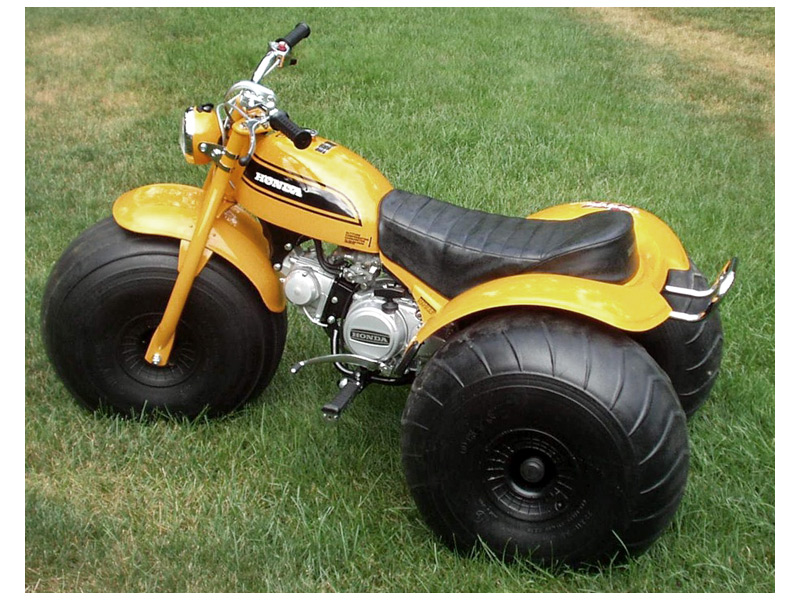 In 1921, the Japanese government decided to use Nippon Gakki's woodworking expertise to create aircraft propellers. In 1922, under the Yamaha brand, the production of high-quality phonographs began, in 19In 1930, the first laboratory for the analysis of acoustics was founded, in 1932, the production of wind organs was mastered, and since 1941, the production of acoustic guitars. The company was able to quickly and efficiently re-profile its production. So metalworking technologies were in demand for casting frames for grand pianos and pianos, and later in the production wind instruments.
In 1921, the Japanese government decided to use Nippon Gakki's woodworking expertise to create aircraft propellers. In 1922, under the Yamaha brand, the production of high-quality phonographs began, in 19In 1930, the first laboratory for the analysis of acoustics was founded, in 1932, the production of wind organs was mastered, and since 1941, the production of acoustic guitars. The company was able to quickly and efficiently re-profile its production. So metalworking technologies were in demand for casting frames for grand pianos and pianos, and later in the production wind instruments.
Genichi Kawakami, 1955
After World War II, the owners of Nippon Gakki began to think about reorienting the company towards more marketable products such as modern motorized vehicles. A new direction of development was made possible thanks to the exclusively personal data of the new head of Yamaha - Genichi Kawakami. Ambitious goals and creativity - this is how you can characterize this period of Yamaha history. Ambitious goals and creativity - this is how you can characterize this period of Yamaha history. Genichi was the eldest son of Kaichi Kawakami, the company's third president. Genichi started working for the company at 1937 and soon headed one of its factories. He then took over as managing director and in 1950, at the age of 39, became the company's fourth president. Recalling the creation of Yamaha Motor, Genichi Kawakami said: “Although the company was performing well and had good financial performance, I knew that we needed to find new areas of activity. I did research to understand what could be produced on the machines we had. So my thoughts reached motorcycles. Although we entered this market later than others, my head of research and other employees visited the leading motorcycle factories in the country and convinced me that there was ample opportunity for development in this market.
Ambitious goals and creativity - this is how you can characterize this period of Yamaha history. Ambitious goals and creativity - this is how you can characterize this period of Yamaha history. Genichi was the eldest son of Kaichi Kawakami, the company's third president. Genichi started working for the company at 1937 and soon headed one of its factories. He then took over as managing director and in 1950, at the age of 39, became the company's fourth president. Recalling the creation of Yamaha Motor, Genichi Kawakami said: “Although the company was performing well and had good financial performance, I knew that we needed to find new areas of activity. I did research to understand what could be produced on the machines we had. So my thoughts reached motorcycles. Although we entered this market later than others, my head of research and other employees visited the leading motorcycle factories in the country and convinced me that there was ample opportunity for development in this market.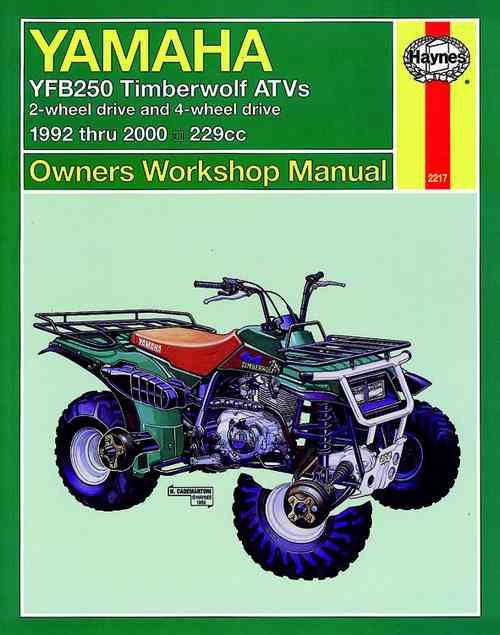 I didn't want to start this unfamiliar business without any preparation, so we went to the German motorcycle factories before starting to develop our first 125cc motorcycle." After several years of preparation, the company released its first motorcycle, the YA-1. This small model, equipped with a single-cylinder 125 cc two-stroke engine, was called the "Red Dragonfly" and brought its creators a resounding success. The management of the company decided at 1955 to establish a subsidiary company that began to manufacture motorcycles - Yamaha Motor. Thus was born Yamaha Motor Co., Ltd. led by founding president Genichi Kawakami. In the very first race in Japan, the YA-1 motorcycle won and became famous throughout the country. After its brilliant debut in Japan, Yamaha turned its attention to the international market. Yamaha won a podium place at the US Grand Prix, Catalina, on the first try. Then the company decided to try its hand at the TT races on the Isle of Man, which were rightfully considered the most difficult in the world, and again won the prize, declaring itself to the whole world.
I didn't want to start this unfamiliar business without any preparation, so we went to the German motorcycle factories before starting to develop our first 125cc motorcycle." After several years of preparation, the company released its first motorcycle, the YA-1. This small model, equipped with a single-cylinder 125 cc two-stroke engine, was called the "Red Dragonfly" and brought its creators a resounding success. The management of the company decided at 1955 to establish a subsidiary company that began to manufacture motorcycles - Yamaha Motor. Thus was born Yamaha Motor Co., Ltd. led by founding president Genichi Kawakami. In the very first race in Japan, the YA-1 motorcycle won and became famous throughout the country. After its brilliant debut in Japan, Yamaha turned its attention to the international market. Yamaha won a podium place at the US Grand Prix, Catalina, on the first try. Then the company decided to try its hand at the TT races on the Isle of Man, which were rightfully considered the most difficult in the world, and again won the prize, declaring itself to the whole world. These successes allowed Yamaha to enter international markets before other Japanese motorcycle manufacturers and became the company's first step towards a global business. Yamaha began product development with an eye to markets around the world and focused on manufacturing techniques that would ensure high quality products. Quite quickly, a system of assembly line production was created, one of the iconic products of which was Japan's first sports bike, the YDS-1. He debuted at 1959 year. At the same time, Genichi Kawakami visited the United States and got acquainted with water sports popular among Americans. He decided to promote water recreational equipment in Japan. And already in 1960, Yamaha began production of boats with a composite plastic hull (CAT-21 and RUN-13) and outboard motors (P-7). The debut of the company in the field of water technology was the first step towards business diversification.
These successes allowed Yamaha to enter international markets before other Japanese motorcycle manufacturers and became the company's first step towards a global business. Yamaha began product development with an eye to markets around the world and focused on manufacturing techniques that would ensure high quality products. Quite quickly, a system of assembly line production was created, one of the iconic products of which was Japan's first sports bike, the YDS-1. He debuted at 1959 year. At the same time, Genichi Kawakami visited the United States and got acquainted with water sports popular among Americans. He decided to promote water recreational equipment in Japan. And already in 1960, Yamaha began production of boats with a composite plastic hull (CAT-21 and RUN-13) and outboard motors (P-7). The debut of the company in the field of water technology was the first step towards business diversification.
Long factory tests preceded the release of the motorcycle
Yamaha motorcycles became the winners of the competition, 1956 year
Rare historical production photo, 1960
Yamaha YDS-1 - Japan's first sports bike, 1959
direction of promising developments and increase the enthusiasm of ordinary employees. The measures taken allowed the company to continue its successful development. A number of high-profile successes in motorcycle racing in those years inspired engineers to new, even more ambitious developments. 1964 and 1965 Yamaha has won two consecutive manufacturers' championship titles in the 250cc class in the World Road Racing Championship. In 1964, the company developed the Yamaha Autolube, an independent oil supply system for two-stroke engines. This technology has given the green light to a new generation of sport bikes and has been highly acclaimed by customers around the world. In those years, an era of unprecedented economic growth began in Japan, and Yamaha introduced several premium motorcycle models at once. At 19In 1968, the 250DT-1 debuted, creating a new category of trials, and in 1970, the XS-1 was Yamaha's first motorcycle with a 4-stroke engine. Also in the watercraft market, Yamaha introduced the first composite plastic hulled fishing boats and workboats in Japan.
The measures taken allowed the company to continue its successful development. A number of high-profile successes in motorcycle racing in those years inspired engineers to new, even more ambitious developments. 1964 and 1965 Yamaha has won two consecutive manufacturers' championship titles in the 250cc class in the World Road Racing Championship. In 1964, the company developed the Yamaha Autolube, an independent oil supply system for two-stroke engines. This technology has given the green light to a new generation of sport bikes and has been highly acclaimed by customers around the world. In those years, an era of unprecedented economic growth began in Japan, and Yamaha introduced several premium motorcycle models at once. At 19In 1968, the 250DT-1 debuted, creating a new category of trials, and in 1970, the XS-1 was Yamaha's first motorcycle with a 4-stroke engine. Also in the watercraft market, Yamaha introduced the first composite plastic hulled fishing boats and workboats in Japan.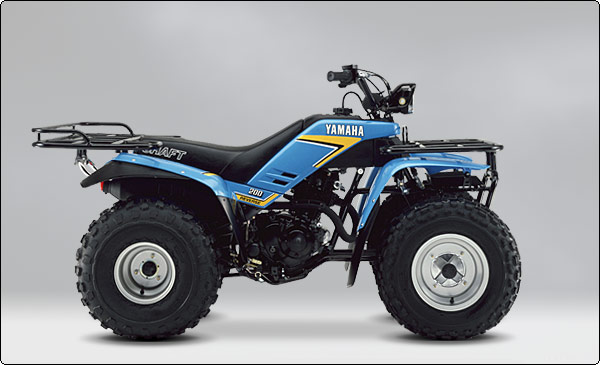 In response to the growing market demand, the company has significantly increased the production of outboard motors, expanding both the product range and its applications around the world. At the same time, the 2000GT sports car was developed jointly with Toyota. The addition of automotive and general purpose engines to Yamaha's product line was the epitome of the company's commitment to business diversification. Exactly at 19In 68, the first snowmobiles of the company were born.
In response to the growing market demand, the company has significantly increased the production of outboard motors, expanding both the product range and its applications around the world. At the same time, the 2000GT sports car was developed jointly with Toyota. The addition of automotive and general purpose engines to Yamaha's product line was the epitome of the company's commitment to business diversification. Exactly at 19In 68, the first snowmobiles of the company were born.
P-7A - the first outboard motor in the history of the company, 1960
In the mid-60s, the 2000GT sports car was developed with Toyota in the mid-60s
The oil crisis provoked tightening of requirements in the 70s to harmful emissions and created an urgent need for fuel economy. Yamaha has responded to this with a range of innovative solutions. Consumer preferences have changed dramatically: the priority was no longer quantity, but quality.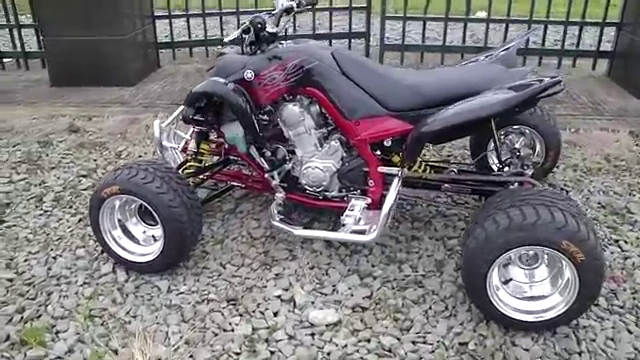 Responding to these changes, Yamaha introduced the economical Passol scooter, as well as a range of other innovations designed to meet the diversity of customer preferences and lifestyles. For development in the market of water equipment, a special project group was created, which was engaged in the development of a global sales strategy for outboard motors, taking into account the needs of local markets. Yamaha also developed diesel outboard engines of the original design. In the world of racing, Yamaha continued to perform at the highest level and achieve outstanding success. From 19For 78 years, Yamaha riders have won world championships three years in a row. In 1979, the Yamaha XT500 won the prestigious Paris-Dakar Rally. Already by 1982, the total production of Yamaha motorcycles reached 20 million units. During this period, Yamaha has significantly expanded its presence in the global market. Already by 1982, the total production of Yamaha motorcycles reached 20 million units. However, at the same time in Japan, the rapid growth of the motorcycle market turned into fierce competition between manufacturers.
Responding to these changes, Yamaha introduced the economical Passol scooter, as well as a range of other innovations designed to meet the diversity of customer preferences and lifestyles. For development in the market of water equipment, a special project group was created, which was engaged in the development of a global sales strategy for outboard motors, taking into account the needs of local markets. Yamaha also developed diesel outboard engines of the original design. In the world of racing, Yamaha continued to perform at the highest level and achieve outstanding success. From 19For 78 years, Yamaha riders have won world championships three years in a row. In 1979, the Yamaha XT500 won the prestigious Paris-Dakar Rally. Already by 1982, the total production of Yamaha motorcycles reached 20 million units. During this period, Yamaha has significantly expanded its presence in the global market. Already by 1982, the total production of Yamaha motorcycles reached 20 million units. However, at the same time in Japan, the rapid growth of the motorcycle market turned into fierce competition between manufacturers.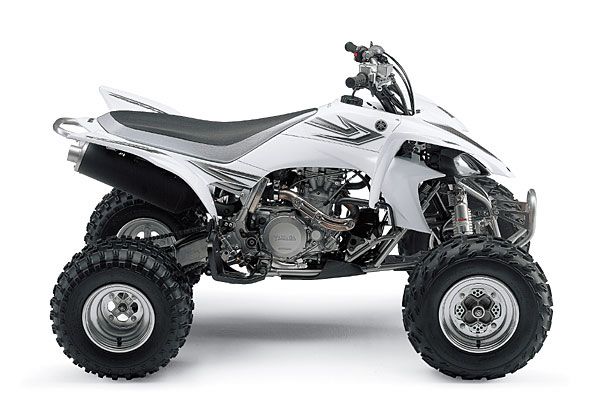 The negative consequences of this situation led to the second serious crisis in the leadership of Yamaha. But at 19In 83, the company was headed by Hideto Eguchi. Under his leadership, the "New Yamaha" program was launched, designed to reorganize the management of the company. The main idea of the program was to encourage and implement the initiatives of ordinary employees - and two years later, these innovations led to an increase in revenues and profits of the company. The high exchange rate of the Japanese yen and the subsequent recession in the Japanese economy affected many companies. However, Yamaha managed to avoid negative consequences by moving production abroad. This move also made Yamaha an even more global company.
The negative consequences of this situation led to the second serious crisis in the leadership of Yamaha. But at 19In 83, the company was headed by Hideto Eguchi. Under his leadership, the "New Yamaha" program was launched, designed to reorganize the management of the company. The main idea of the program was to encourage and implement the initiatives of ordinary employees - and two years later, these innovations led to an increase in revenues and profits of the company. The high exchange rate of the Japanese yen and the subsequent recession in the Japanese economy affected many companies. However, Yamaha managed to avoid negative consequences by moving production abroad. This move also made Yamaha an even more global company.
Yamaha XT500 wins the prestigious 1979 Paris-Dakar Rally
This period is marked by new achievements. In 1984, Yamaha developed the world's first five-valve, twin-cam engine.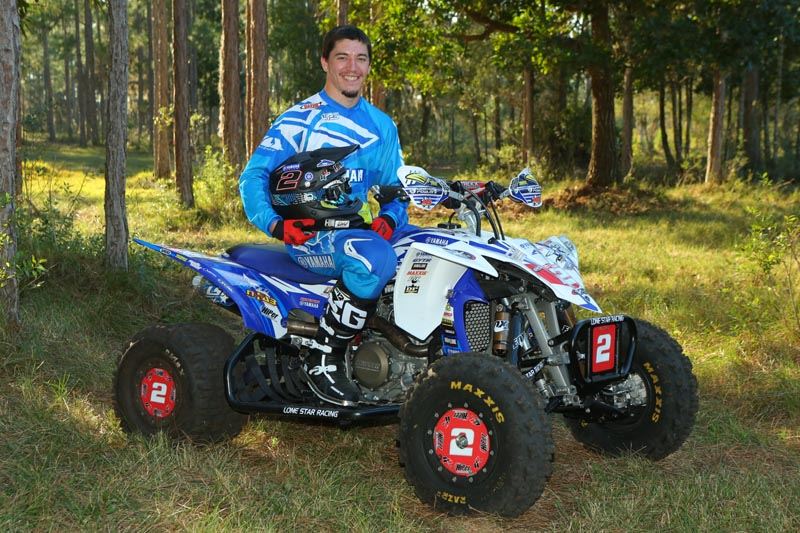 The FZ-750 motorcycle, equipped with this engine, became a sensation both in Japan and abroad. In the field of water technology, the company actively developed the production of boats, as well as the production and export of outboard motors. Parallel to this, Yamaha began to develop engines for racing cars for Formula 2, Formula 3000, and then for Formula 1. Over the years, Yamaha ATVs and ATVs have gained immense popularity in both recreational and commercial use. Yamaha entered the new watersports market with industrial robots, chip assembly equipment, heat pumps and air conditioners, and agricultural unmanned helicopters, diversifying its business. Autumn 19In 1990, there was a crisis in the Japanese stock market, which led to a sharp drop in stock prices and a collapse of the economy. To overcome the effects of a prolonged recession and expand the globalization of the company, Yamaha announced a new corporate philosophy, heading towards the creation of a company that creates "Kando".
The FZ-750 motorcycle, equipped with this engine, became a sensation both in Japan and abroad. In the field of water technology, the company actively developed the production of boats, as well as the production and export of outboard motors. Parallel to this, Yamaha began to develop engines for racing cars for Formula 2, Formula 3000, and then for Formula 1. Over the years, Yamaha ATVs and ATVs have gained immense popularity in both recreational and commercial use. Yamaha entered the new watersports market with industrial robots, chip assembly equipment, heat pumps and air conditioners, and agricultural unmanned helicopters, diversifying its business. Autumn 19In 1990, there was a crisis in the Japanese stock market, which led to a sharp drop in stock prices and a collapse of the economy. To overcome the effects of a prolonged recession and expand the globalization of the company, Yamaha announced a new corporate philosophy, heading towards the creation of a company that creates "Kando". In other words, the goal of Yamaha Motor is now to bring more joy and happiness to people and create in their lives the feeling of Kando - a feeling of joyful excitement and deep contentment. As a world-wide company whose products are used on land, in water, in snowfields and in the sky, Yamaha Motor strived to "make life more joyful and fulfilling for people around the world", to apply all skill and passion to to fulfill people's dreams and be the one they turn to for the "new Kando". Now Yamaha Motor's goal is to bring more joy and happiness to people and create in their lives the feeling of Kando - a feeling of joyful excitement and deep contentment.
In other words, the goal of Yamaha Motor is now to bring more joy and happiness to people and create in their lives the feeling of Kando - a feeling of joyful excitement and deep contentment. As a world-wide company whose products are used on land, in water, in snowfields and in the sky, Yamaha Motor strived to "make life more joyful and fulfilling for people around the world", to apply all skill and passion to to fulfill people's dreams and be the one they turn to for the "new Kando". Now Yamaha Motor's goal is to bring more joy and happiness to people and create in their lives the feeling of Kando - a feeling of joyful excitement and deep contentment.
Yamaha FZ750, 1985
The company's first watercraft - Marine Jet 500T, 1986
In 1994, the new president, Takehiko Hasegawa, took over the company. He relied on closely monitoring the current needs of customers. This period is marked by achievements such as the Majesty maxi-scooter and the Dragstar cruiser, which were distinguished by their striking design and high level of comfort. In motorcycle racing, the seriously modified YZR500 broke one record after another. Yamaha also set a record for the most wins in the Paris-Dakar rally. In the field of water engineering, Yamaha has become increasingly active in various competitions, including the most prestigious yacht racing. The company continued to develop new products and carry out various promotional activities to attract more people to water sports. At 1995 saw the debut of the entry-level boat SRV. The Yamaha Z200N two-stroke outboard boat engine with the world's first high-pressure injection system, as well as the F225 four-stroke engine with a record power density, have won numerous awards for their high performance, low emissions and excellent economy. In the early 90s, Yamaha also developed several absolutely unique products at once. For example, artificial underwater reefs to increase fish populations and the world's first electric hybrid bike. For people with disabilities, Yamaha has developed hand-operated electric wheelchair assists.
In motorcycle racing, the seriously modified YZR500 broke one record after another. Yamaha also set a record for the most wins in the Paris-Dakar rally. In the field of water engineering, Yamaha has become increasingly active in various competitions, including the most prestigious yacht racing. The company continued to develop new products and carry out various promotional activities to attract more people to water sports. At 1995 saw the debut of the entry-level boat SRV. The Yamaha Z200N two-stroke outboard boat engine with the world's first high-pressure injection system, as well as the F225 four-stroke engine with a record power density, have won numerous awards for their high performance, low emissions and excellent economy. In the early 90s, Yamaha also developed several absolutely unique products at once. For example, artificial underwater reefs to increase fish populations and the world's first electric hybrid bike. For people with disabilities, Yamaha has developed hand-operated electric wheelchair assists.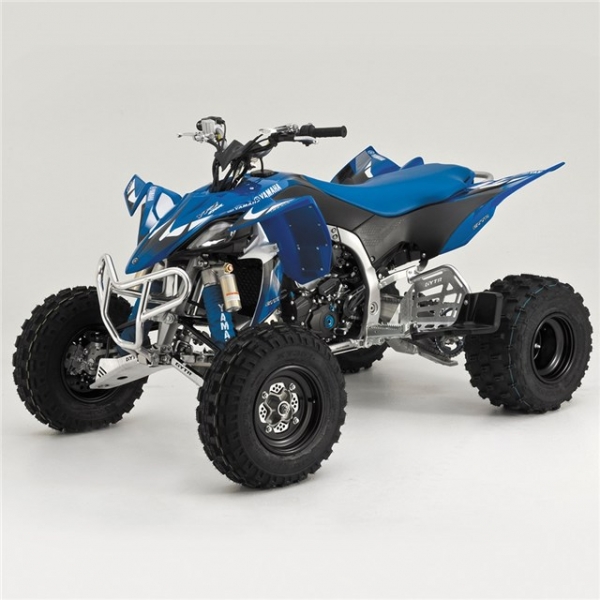
Yamaha PAS, 1993
Yamaha YZR500, 1995
Under his leadership, the company focused on developing new products using Yamaha's unique technologies to truly stand out from the competition. These products included the TMAX Automatic Super Sports maxi scooter and the MT-01 muscle bike motorcycle. During the development of these products, Yamaha created fundamentally new core technologies, including a new aluminum alloy casting technology and fuel injection system for four-stroke engines. At the same time, for the rapidly growing Asian markets, Yamaha prepared a specific brand communication strategy and developed several models specifically for the Pacific region, as well as strengthened its production capacity in Asia. In racing, Yamaha won three championship titles at once in the prestigious MotoGP world championship: victories were won in the standings of manufacturers, teams and riders.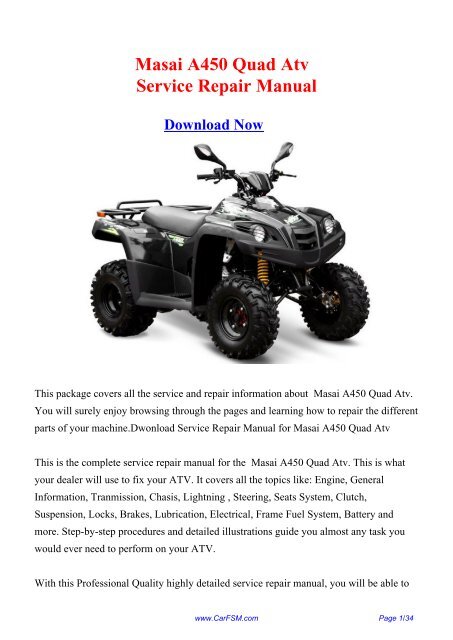 In the World Motocross Championship, Yamaha won the championship titles in the individual and manufacturer's classifications. In the world of watercraft, Yamaha has become a leader in the manufacture of outboard motors for both commercial and recreational use, winning the sympathy of customers around the world. The Yamaha Swim 21 was the first composite pool to be approved for World Championship swimming. Yamaha has established itself as the leading pool manufacturer. In the field of environmental protection, Yamaha has opened up new lines of business and created products with completely new capabilities. So in 2002, the company entered the biotechnology market with solutions for capturing and sequestering CO2. 2003 saw the debut of the Passol electric scooter and the FC06 fuel cell scooter. The following year, an autonomous navigation system for automated surveillance systems was introduced.
In the World Motocross Championship, Yamaha won the championship titles in the individual and manufacturer's classifications. In the world of watercraft, Yamaha has become a leader in the manufacture of outboard motors for both commercial and recreational use, winning the sympathy of customers around the world. The Yamaha Swim 21 was the first composite pool to be approved for World Championship swimming. Yamaha has established itself as the leading pool manufacturer. In the field of environmental protection, Yamaha has opened up new lines of business and created products with completely new capabilities. So in 2002, the company entered the biotechnology market with solutions for capturing and sequestering CO2. 2003 saw the debut of the Passol electric scooter and the FC06 fuel cell scooter. The following year, an autonomous navigation system for automated surveillance systems was introduced.
Passol electric scooter, 2005
Valentino Rossi on Yamaha again first in MotoGP, 2010
In 2005, the company celebrated its 50th anniversary, celebrated around the world. Yamaha Motor Co. headed by Takashi Kajikawa, who continued the process of globalization of the holding. As part of its growth strategy in the Asian market, the company opened a new motorcycle factory and a global training center in Indonesia. Yamaha was also actively expanding its presence in the BRIC countries - Brazil, Russia, India and China, which had good potential for growth. In these markets, Yamaha not only sold its products, but also participated in the organization of leisure infrastructure, and also supported children's sports activities. These initiatives resulted in a significant increase in sales figures, which reached record levels. For example, in 2007, the total production at factories in Indonesia reached 10 million motorcycles. However, at the same time, the company also faced losses due to the onset of the global financial crisis and the global economic recession. Despite a series of adverse events, Yamaha bravely and decisively accepted the next challenge of fate. In 2009Tsuneji Togami became the head of the company, and a new stage began in the history of Yamaha.
Yamaha Motor Co. headed by Takashi Kajikawa, who continued the process of globalization of the holding. As part of its growth strategy in the Asian market, the company opened a new motorcycle factory and a global training center in Indonesia. Yamaha was also actively expanding its presence in the BRIC countries - Brazil, Russia, India and China, which had good potential for growth. In these markets, Yamaha not only sold its products, but also participated in the organization of leisure infrastructure, and also supported children's sports activities. These initiatives resulted in a significant increase in sales figures, which reached record levels. For example, in 2007, the total production at factories in Indonesia reached 10 million motorcycles. However, at the same time, the company also faced losses due to the onset of the global financial crisis and the global economic recession. Despite a series of adverse events, Yamaha bravely and decisively accepted the next challenge of fate. In 2009Tsuneji Togami became the head of the company, and a new stage began in the history of Yamaha.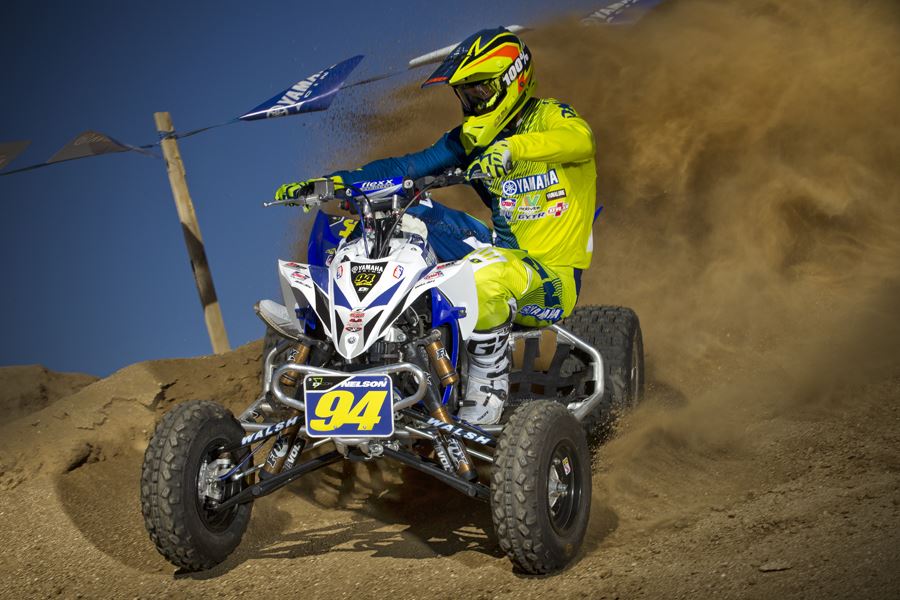 The recovery from the financial crisis required structural reforms and new growth strategies. Yamaha has reorganized its production systems at factories in Japan and abroad, and several new products have been introduced to Asian markets. These efforts paid off within a year, and the company became profitable again. Opening up new promising market segments, the company introduced the EC-03 electric scooter. In collaboration with Toyota, a concept was developed for the communication system of personal vehicles of the future. The threat of instability due to the high exchange rate of the Japanese yen was successfully overcome by establishing the highest standards of production and training at the global level. A design center was also established to strengthen Yamaha's design school. Supporting a variety of cultural and sporting events has become an important element of the Kando philosophy and has made a significant contribution to enhancing the prestige of the Yamaha brand. Supporting a variety of cultural and sporting events has become an important element of the Kando philosophy and has made a significant contribution to enhancing the prestige of the Yamaha brand.
The recovery from the financial crisis required structural reforms and new growth strategies. Yamaha has reorganized its production systems at factories in Japan and abroad, and several new products have been introduced to Asian markets. These efforts paid off within a year, and the company became profitable again. Opening up new promising market segments, the company introduced the EC-03 electric scooter. In collaboration with Toyota, a concept was developed for the communication system of personal vehicles of the future. The threat of instability due to the high exchange rate of the Japanese yen was successfully overcome by establishing the highest standards of production and training at the global level. A design center was also established to strengthen Yamaha's design school. Supporting a variety of cultural and sporting events has become an important element of the Kando philosophy and has made a significant contribution to enhancing the prestige of the Yamaha brand. Supporting a variety of cultural and sporting events has become an important element of the Kando philosophy and has made a significant contribution to enhancing the prestige of the Yamaha brand.
In 2010, the company returned to profitability and celebrated 50 years in the marine industry with the introduction of several new boats and outboard motors. In MotoGP, for the first time in the history of the championship, Yamaha has won a triple victory in the individual, team and manufacturers' classifications for three years in a row. 2011 was marked by another memorable achievement, becoming Yamaha's 50th year of participation in the World Motorcycle Championship. In 2013, Yamaha unveiled a new mid-term business plan to achieve sustainable growth and sustainable development for the company. The new challenge was enthusiastically accepted by the company. Yamaha does not intend to rest on the laurels of its success. The company is focused on the future and relentlessly moves forward towards ever more ambitious goals. After all, this is the unique spirit of Yamaha. In order to give people around the world more pleasant emotions and help them to fulfill their self-realization, Yamaha is constantly striving for excellence to be the company that creates "Kando".